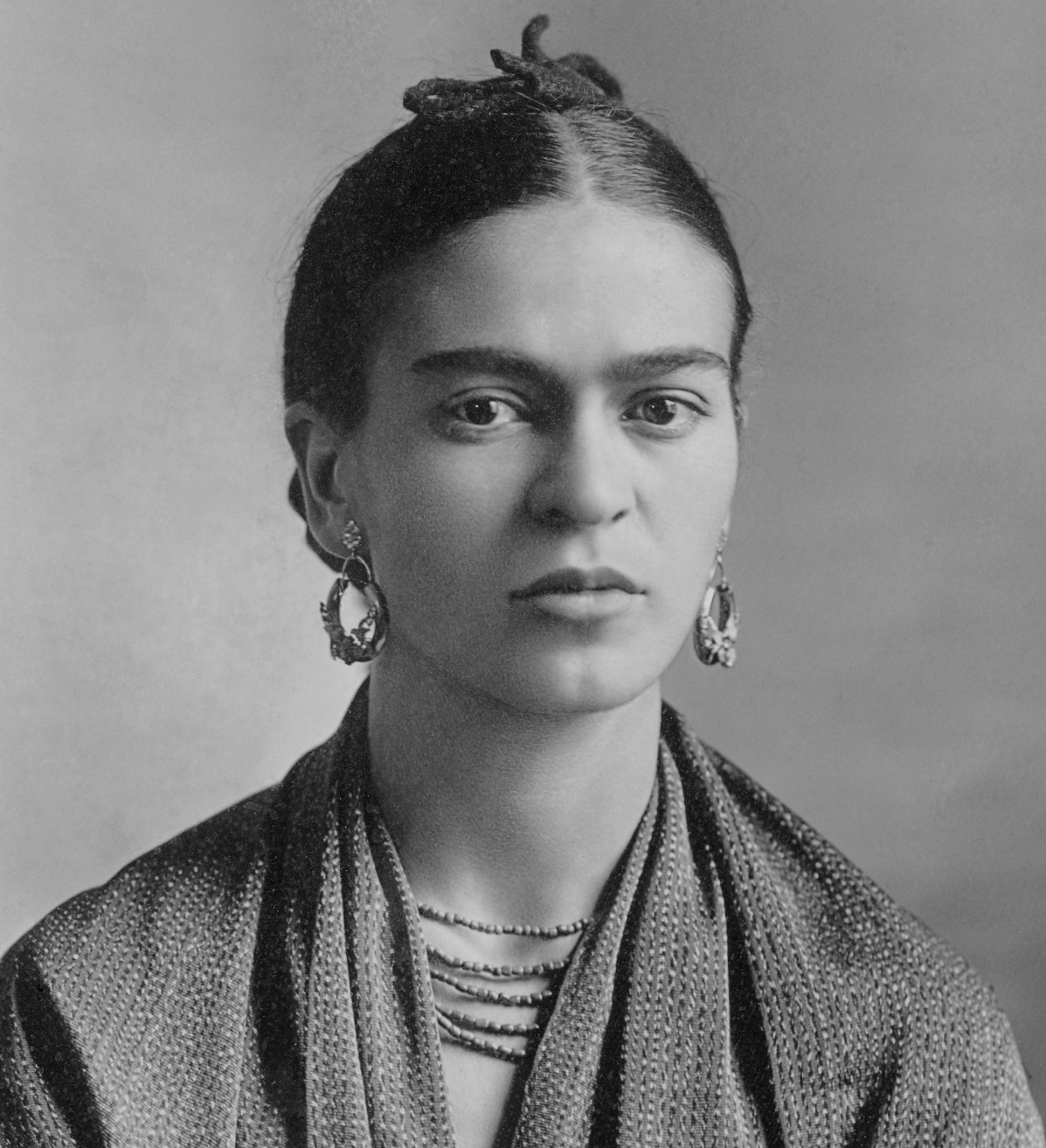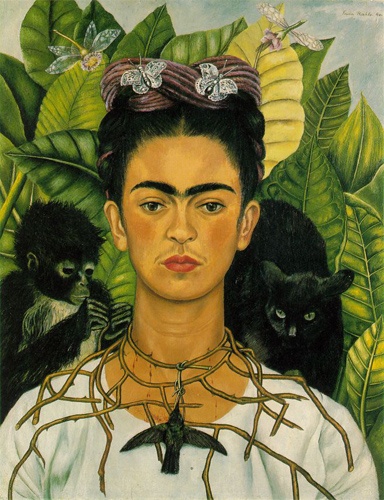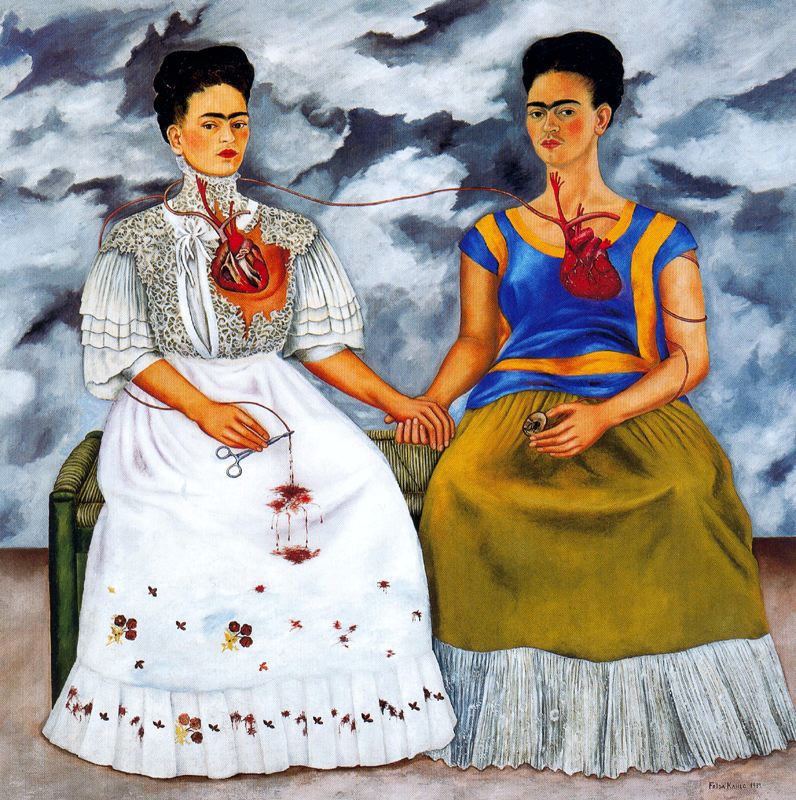Frida Kahlo, A Stunning Portrait Of Perseverance
 Contributed by
Arlene Lagman
February 21, 2016
Contributed by
Arlene Lagman
February 21, 2016

Frida Kahlo was not well known to the public, not until the latter part of the 1970s, decades after her death. After people discovered her rich artwork, which tackled diverse physical and emotional pain, sexuality, death, strength and perseverance, Frida Kahlo became an icon that became the center of numerous studies and analysis.
“Fridamania” even entered the movie and fashion scenes as people started appreciating her colorful life and vibrant style.
Mention Frida Kahlo today, and the first image that comes to most people’s minds is her signature bushy eyebrows, impressive stare and a chin that is held high in defiance. Such an image is one of strength, and of a woman who has gone through a lifetime of challenges.
 Frida Kahlo’s life is as colorful as her numerous paintings. She was born on July 6, 1907 to a Mexican mother and a European father – a combination that resulted in her unique beauty. Growing up in Mexico, she was the embodiment of her culture’s love for color and festivity as seen through her love of wearing the classic Tehuana costume. Frida loved beauty and sought to live it on a day-to-day basis, both in her manner of dress as well as her gift for painting.
Frida Kahlo’s life is as colorful as her numerous paintings. She was born on July 6, 1907 to a Mexican mother and a European father – a combination that resulted in her unique beauty. Growing up in Mexico, she was the embodiment of her culture’s love for color and festivity as seen through her love of wearing the classic Tehuana costume. Frida loved beauty and sought to live it on a day-to-day basis, both in her manner of dress as well as her gift for painting.
While her talent in painting is exceptional, her works are also deep and compelling stories of her life, her loves, and the painful moments that add a splash of darkness to her vivacity. Her most popular works are her own self-portraits, and it can be said that Frida was very much in touch with herself and painted her feelings and emotions for the world to see, with no worry of criticism nor judgment. Painting was her outlet that allowed her to endure, to see herself from one point in life to another, whether it was a challenge or a triumph.
Painting came to be Frida’s tool for persevering in a world filled with physical and emotional pain. In 1925, at the young age of eighteen, she sustained permanent injuries from a bus accident: injuries that totally changed the course of her life. Her spinal column and pelvis broke in several places. A metal rail pierced her body and went out through her vagina. Her condition was such that doctors did not expect her to live at all, but she did. The nature of her accident meant that she would suffer pains in her spinal column and, worse, the pain of not being able to bear any children.
Instead of giving in, Frida painted her feelings throughout the entire time she was recuperating from the tragic accident. Painting gave her something to do during those long weeks, but also became a means to express what she felt inside, both good and bad.
 Frida continued to live life to the fullest, despite her accident. In 1929, she married an artist just like herself: Diego Rivera, a famed Mexican muralist. As many people know, the beautiful Frida was fiercely in love with the stout and unpleasant-looking Diego. However, this was not enough to keep Diego from straying; he had numerous affairs with other women, including Frida’s younger sister Cristina. This pained her deeply, and may have been the cause for her to also engage in affairs of her own. Frida had many lovers soon after, both men and women – including the Russian revolutionary Leon Trotsky, whom she and husband Diego had become close to during his time of exile in Mexico as the couple, too, were Communists.
Frida continued to live life to the fullest, despite her accident. In 1929, she married an artist just like herself: Diego Rivera, a famed Mexican muralist. As many people know, the beautiful Frida was fiercely in love with the stout and unpleasant-looking Diego. However, this was not enough to keep Diego from straying; he had numerous affairs with other women, including Frida’s younger sister Cristina. This pained her deeply, and may have been the cause for her to also engage in affairs of her own. Frida had many lovers soon after, both men and women – including the Russian revolutionary Leon Trotsky, whom she and husband Diego had become close to during his time of exile in Mexico as the couple, too, were Communists.
Frida’s ability to paint and immortalize her emotions into portraits gained a following and she soon rose to fame as an artist. She opened exhibitions in Paris and New York City, became friends with and gained admirers in famous Surrealist painters, with the most notable of all being Pablo Picasso himself. Her beauty and charm won her many admirers and allowed her a warm welcome in numerous high-society gatherings in America. In such formal occasions, Frida was a breath of fresh air, thanks to her somewhat shocking sense of humor and proclivity for swearing and sharing dirty jokes.
Busy as she was, this lifestyle likely hid the anguish she felt for not being able to bear children and for suffering a miscarriage in 1932 as a result of her accident. This is best seen in her painting entitled Henry Ford Hospital, from the same year as the miscarriage, which depicts a bleeding Frida lying on a bed. From this work onwards, her self-portraits became more macabre, thereby earning her a reputation for being one of the few, original visual artists of her time. Another work entitled My Birth was a portrayal of her anguish, with her bloodied head posing at the entryway of her vagina. Rivera, in his autobiography, described how she “exalted the feminine qualities of endurance of truth, reality, cruelty, and suffering. Never before had a woman put such agonized poetry on canvas as Frida did at this time…”
If one were to look beyond the many cats, monkeys, dogs, birds and even plants that accompany her self-portraits and other paintings, these recurring details are but a replacement for the children that she could not have nor depict as her own in portraits. An even closer look at these would be telling of her yearning to assume a part in the life cycle.

Her most popular painting entitled The Two Fridas became a representation of the time when she and Diego divorced, with dark-skinned Mexican Frida celebrating the love she felt for Diego alongside pale-skinned European Frida hurting from an exposed and broken heart.
A faint silver lining in her tumultuous life came in her remarriage to Diego only a year after their divorce. But by this time in the 1940s, she had undergone close to 35 operations and needed to sustain the burden of having to wear a steel corset to support her ailing spinal column. This was very taxing, and months were spent in bed in attempts to restore her worsening health. Still, she painted on and drew enough strength to make a masterpiece entitled Tree of Hope, again depicting two Fridas but, this time, the Mexican one standing guard for the injured Frida who is shown lying down on a gurney. Though her health continued to deteriorate to the point that she was hospitalized for a year and had to have her leg amputated, she still found ways to keep her spirit afloat through painting.
In her final days, thoughts of death preoccupied her as she came to terms with her impending departure from this world. Paintings done by Frida at this time reflected her depression through a number of grim images. Her husband, Diego, recounts her day of passing on July 13, 1954 as the most tragic one in his entire life, having lost the love of his life.
Kahlo’s artworks appeal to many. She is considered one of the brilliant female multicultural artists, amidst the flaws and obscurities of her life and works. We may celebrate her creativity, originality and color but we also may celebrate the fact that a woman can now be remembered as both a fine artist and a person grounded in the realities of the human condition.
With her passing comes a gift to women: a collection of paintings that are meant to show the triumphs and tribulations of life, the realness of human frailty through physical and emotional anguish, and most importantly, the importance of persevering through pain that sought to put one down. Frida Kahlo was and will always be a woman to be admired for her talent, strength and absolute uniqueness.
—
We are the leaders, innovators, and visionaries – whether in the public eye or behind the scenes – who are revolutionizing the way people think and live. We are #ConnectedWomen. Join the Connected Women community now, it’s free!










Sorry, the comment form is closed at this time.